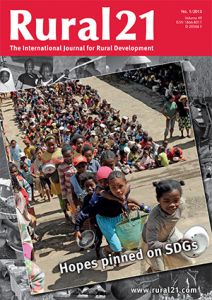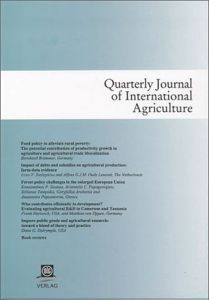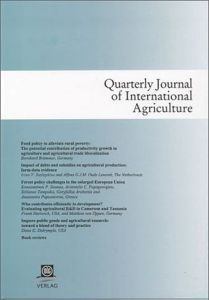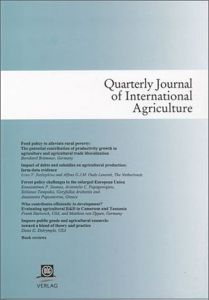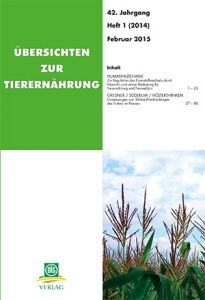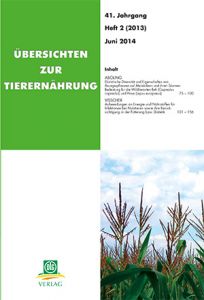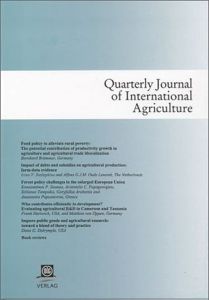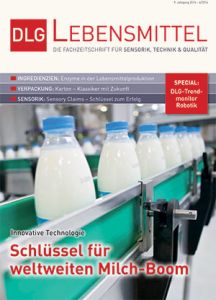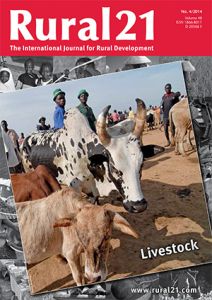Verstecke Angebote
-
Rural 21 (engl. Ausgabe 1/2015)Focus 1/2015: Hopes pinned on SDGs
When the international community of states adopts the Sustainable Development Goals (SDGs) in New York in September 2015, the Millennium Development Goals (MDGs) will once and for all be a thing of the past. Although it cannot be denied that the MDGs have been successful – absolute poverty has been halved since 1990, and 90 per cent of children in developing countries are today completing primary education – the positive results should not distract attention away from the weaknesses. The MDGs have neglected one important factor in poverty reduction, that of empowering people, as they have the specific conditions in conflict-affected countries and the aspect of environmental sustainability. In addition, they have continued the traditional paternalist aid relations between the Global North and the Global South instead of abandoning them. Therefore – and also because power relations in the world have shifted immensely since the MDGs were adopted – countries agreed to replace the MDGs by a new set of goals. In this edition, our authors explain the essence of these Sustainable Development Goals, what is expected of them and, above all, what is needed for their ambitious agenda to be implemented. After all, the latest proposal has 17 goals and 169 targets … Erfahren Sie mehr -
Quarterly Journal of International Agriculture 3/2015Zeitschrift für internationale Landwirtschaft Erfahren Sie mehr
-
Quarterly Journal of International Agriculture 2/2015Zeitschrift für internationale Landwirtschaft Erfahren Sie mehr
-
Quarterly Journal of International Agriculture 1/2015Zeitschrift für internationale Landwirtschaft Erfahren Sie mehr
-
Übersichten zur Tierernährung 1/2014erscheint 2x jährlich Erfahren Sie mehr
-
DLG Lebensmittel 2/2015Im Mittelpunkt des Heftes stehen Fachartikel und Praxisbeiträge zu den Themen "Lebensmittelqualität", "Sensorik", "Lebensmitteltechnologie", "Ingredienzien" sowie "Kommunikation/Marketing". Ein aktueller Blick in die Entwicklung der Lebensmittelmärkte rundet das Angebot ab. Damit werfen wir einen ganzheitlichen Blick auf die „Welt der Lebensmittel“ – von der Entwicklung, über die Produktion bis zur Vermarktung. Erfahren Sie mehr
-
Übersichten zur Tierernährung 2/2013erscheint 2x jährlich Erfahren Sie mehr
-
Quarterly Journal of International Agriculture 4/2014Zeitschrift für internationale Landwirtschaft Erfahren Sie mehr
-
DLG Lebensmittel 6/2014Im Mittelpunkt des Heftes stehen Fachartikel und Praxisbeiträge zu den Themen "Lebensmittelqualität", "Sensorik", "Lebensmitteltechnologie", "Ingredienzien" sowie "Kommunikation/Marketing". Ein aktueller Blick in die Entwicklung der Lebensmittelmärkte rundet das Angebot ab. Damit werfen wir einen ganzheitlichen Blick auf die „Welt der Lebensmittel“ – von der Entwicklung, über die Produktion bis zur Vermarktung. Erfahren Sie mehr
-
Rural 21 (engl. Ausgabe 4/2014)Focus 4/2014: Livestock
The livestock sector creates livelihoods for an estimated one billion people world-wide. Not only is the consumption of milk, meat and eggs an important source of protein and micronutrients and hence a crucial pillar of food security for the rural poor in particular. For many people, the sale of animal products is the most important, if not the only, source of income. In addition, the animals are a significant multifunctional asset. They provide dung, raising soil fertility, they are simultaneously beasts of burden and tractors, and they represent “hoofed insurance”, not to mention the social prestige that they endow their owners with in several societies. In spite of its important role, animal production has been an unfavourable topic in the development debate – mainly because of its environmental impact. After all, animals account for two thirds of all climate gas emissions from agriculture; water pollution and loss of biodiversity are attributed to animal husbandry as are the transmission of animal-borne diseases to humans and unhealthy food, not to mention competition with other areas of food production. With this edition of Rural 21, we want to take a look at the current state of debate. Erfahren Sie mehr

